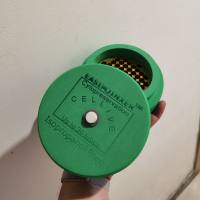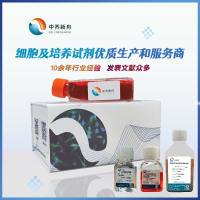Procedure for fixing and staining adherent cells for immunofluorescence
互联网
Description
This procedure describes how to process cells for immunofluoresence microscopy.
Procedure
1. Sterilize coverslips under UV light for 20-30m
a. To increase cell adherence, treat coverslips with a 1:10 dilution of poly-lysine solution (Electron Microscope Sciences #19320-A) at room temperature for 5m before sterilizing coverslips
2. Plate cells at appropriate dilution and grow until cells reach desired confluence (~70)
3. Aspirate media
4. Fix cells with ice-cold MeOH for 5-7m at -20oC
a. MeOH fix is not a true fix. It “dehydrates” the cells and both fixes and permeablizes. This can sometimes disrupt the localization of soluble proteins, but is commonly used for major structural proteins including the nuclear lamina/matrix
b. Alternative: Fix cells in 3.7 PFA for 10m at room temperature. Permeablize cells in 0.1 NP-40 for 5m or 0.2 Triton X-100 for 5m at room temperature. This method will retain solution protein distribution.
5. Gently and briefly wash cells in PBS to remove fix reagent
6. Create a humid chamber consisting of
a. Large culture dish
b. Parafilm in center
c. Wet kimwipes along edges
7. Prepare appropriate dilution of primary antibody in 5 animal serum + PBS
a. Animal serum is for blocking purposes and should correspond to species that secondary antibody is developed in. For example, if you are using goat anti-rabbit 488 and goat anti-mouse 568, you should use 5 normal goat serum for blocking
8. Place 100uL of primary antibody solution onto parafilm in humidified chamber
9. Invert coverslips onto antibody solution drop
10. Cover chamber and incubate at 37oC for 1h
11. Wash cells 2xPBSt for 10m, and 1xPBS for 10m
12. Incubate cells with secondary solution similar to that of primary solution
a. Blocking serum is optional but not necessary for secondary solution
b. Alexa antibodies (Molecular Probes) are typically used at a 1:1000 dilution in PBS
c. From this point on coverslips should remain shielded from light
13. Incubate secondary antibody for 30m at 37oC
14. Following secondary incubation, wash coverslip as in step 11
15. If DNA staining is desired, stain cells with Hoercht 33328 for 10m at room temperature (1:10000 dilution)
a. If staining DNA, follow with wash as in step 11
16. Place 15uL of mounting media on slide
a. For localization of nuclear proteins, PPD mounting media is preferred as it minimizes disruption of nuclei which can occur with hardening mounting medias
b. PPD (store at -20oC wrapping in foil)
i. 10mg PPD (Sigma #275158)
ii. 1mL 0.1M Tris pH 8-9 (pH is key for maintaining slides long-term)
iii. 5-9mL of glycerol for desired thickness (usual is 6mL)
iv. up to 10mL with dH2O
17. Invert coverslip onto slide and remove excess mounting media with filter paper
18. Seal edges with nail polish
19. Shield from light and allow to dry for 30m
20. Store slides at -20oC until ready to image









